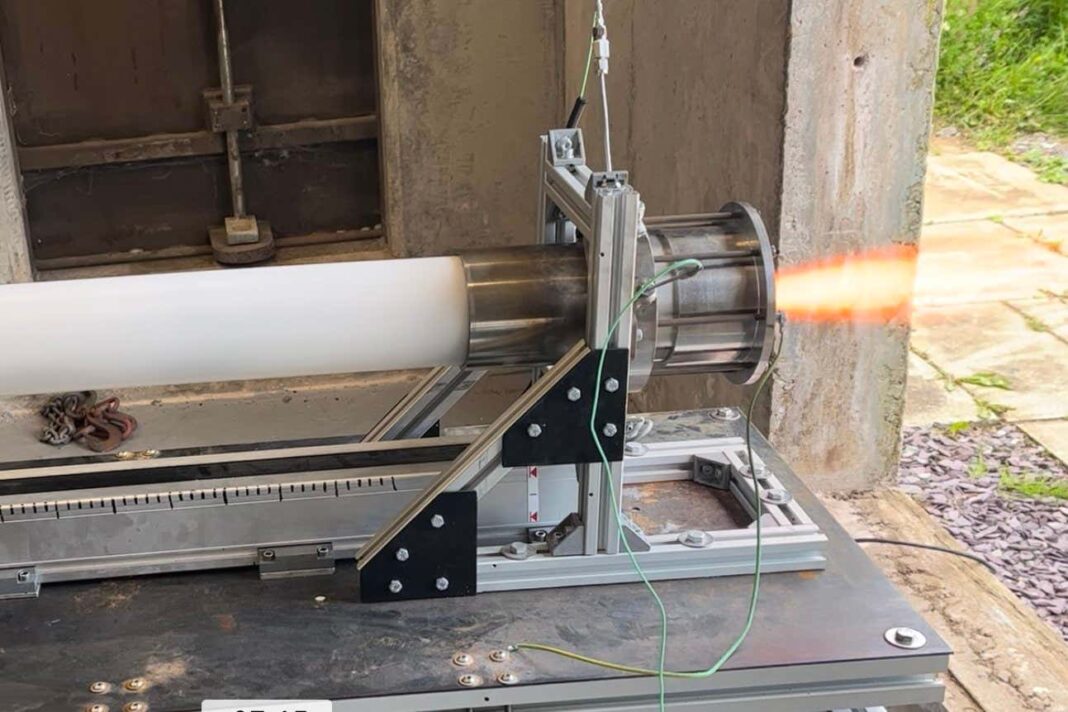Testing the prototype of the self-eating rocket engine Bzdyk et al. Rockets that eat themselves may be on the way. To reach orbit, a rocket must hoist its own mass and the mass of its propellant as well as whatever payload it is trying to carry into space.
But if a rocket could burn its own parts as fuel, it could free up capacity for transporting more important science projects and supplies. A team of engineers has built a prototype of one of these “autophage engines” for the first time. Read more The concept of a rocket that eats its own parts was first patented in 1938, but a working prototype was never built because it would have been tough to execute with the that have historically performed most launches.
In recent years, however, small satellites have risen in popularity, so there is increasing demand for smaller, more efficient rockets that are not limited by the need to carry their own enormous heft into space. Advertisement at the University of Glasgow in the UK and his colleagues have built a small prototype of a rocket engine that eats its own fuel tank. It isn’t powerful enough to loft anything into space but still demonstrates that the concept works.
“Because we’re burning the fuselage, we’re getting rid of the problem of miniaturising the rocket, so when you want to send a small payload to space you can do it right away rather than waiting for a rideshare mission on a larger rocket,” he says. The researchers are presenting their work at the American Institute of Aeronautics and Astronautics SciTech Forum in Florida on 10 January. The engine is called the Ouroborous-3, named after the ancient symbol of a snake eating its own tail.
Like the emblematic snake, the engine is designed to devour its own back end as it uses up the contained there. “As you burn through your propellants, you have these empty tanks where you’ve got all of this structural mass that’s not being useful,” says Bzdyk. “So what we’re doing is consuming that dead weight so you don’t have to carry it with you on the way up, and that allows you to carry more mass to space.
” Sign up to our Launchpad newsletter Voyage across the galaxy and beyond with our space newsletter every month. In the prototype, as the oxygen and propane that make up the engine’s main fuel are burned, the plastic tube that holds that fuel is also fed into the engine. That tube constitutes up to one-fifth of the total propellant used for the burn, which provides about 100 newtons of thrust – only about four times as much force as it takes to break an egg.
The team is now working on a larger-scale prototype that could provide about 1000 newtons of thrust, which is about one-sixth as much as the engine will need to make it to and about one-twentieth as much as it will need to make it to orbit. “With added tests, they should be able to scale up the rocket… [but] sometimes scaling up is not trivial, easy or likely,” says at Rutgers University in New Jersey. The challenges include making sure the plastic fuselage is burned and fed into the engine at a consistent speed, and testing how burning up pieces of the rocket alters its shape, and thus its flight path.
Not only could autophage engines increase the efficiency of launches, they could also help mitigate the problem of – leftover pieces of spacecraft that hurtle around in orbit and can endanger other satellites. If the spent fuel tanks that are normally dropped into the atmosphere or left in orbit are burned up instead, it could be a small step towards fixing that problem, says at the University of Southampton in the UK. Topics:.
From: newscientist
URL: https://www.newscientist.com/article/2411631-prototype-rocket-engine-burns-itself-up-for-fuel-as-it-flies/?utm_campaign=RSS%7CNSNS&utm_source=NSNS&utm_medium=RSS&utm_content=news



